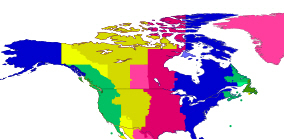‘I remember when the sun was the boss of the job’
I found that “boss of the job” quote from a disgruntled newspaper editor when I wrote a short piece for a railroad newsletter about the influence of the railroads on the creation of time zones in the U. S.
In fact, without national standards, the railroads created their own five time zones in 1883 because it was impossible to publish schedules or even operate efficiently when every town and county rolled their own time zones. Looking back, Fox News said it was a “Brazen effort to bring sanity to cross-continental rail travel governs many aspects of life today.”
 As the History Channel writes, “Most Americans and Canadians quickly embraced their new time zones, since railroads were often their lifeblood and main link with the rest of the world. However, it was not until 1918 that Congress officially adopted the railroad time zones and put them under the supervision of the Interstate Commerce Commission.” That “boss of the job” editor was, I think, in the minority.
As the History Channel writes, “Most Americans and Canadians quickly embraced their new time zones, since railroads were often their lifeblood and main link with the rest of the world. However, it was not until 1918 that Congress officially adopted the railroad time zones and put them under the supervision of the Interstate Commerce Commission.” That “boss of the job” editor was, I think, in the minority.
The legislation adopting this for the country didn’t arrive until 1918 when Congress made time zones a law under the jurisdiction of the Interstate Commerce Commission and then the Department of Transportation.
Union Pacific’s “Track Record,” writes that, “Long before the days of Rolex, Citizen, and Apple, telling time was a little more complicated than simply glancing down at your watch. Back in the early 1800s, the sun served as the official ‘clock’ in the U.S., and time was based on each city’s own solar noon, or the point when the sun is highest in the sky.
“While this may have seemed like a good idea, this timekeeping method resulted in the creation of more than 300 local time zones across the country — not to mention the disparity in local time depending on your location. So, for example, while it could be 12:09 p.m. in New York, it could also be 12:17 p.m. in Chicago.
“Think about all of the confusion that would cause in today’s busy world!”
As 99% Invisible reports, “As the idea of standard times spread, delegates to the International Meridian Conference proposed a globe-spanning system that would involve 24 zones, each one an hour apart. Basically, it was the US-type system that expanded to an international scale. This seems like a fairly obvious solution in hindsight, but none of this was inevitable — time had worked just fine for thousands of years before it was sliced up into a 24-piece spherical pie (albeit with a few rough edges and exceptions).”

Bottom Line: don’t consult your sundial before watching TV, calling people far away, testifying in a murder trial (especially your own), or meeting a hot date from a few towns down the road.
P.S. Don’t get me started on the lunacy of daylight savings time.



